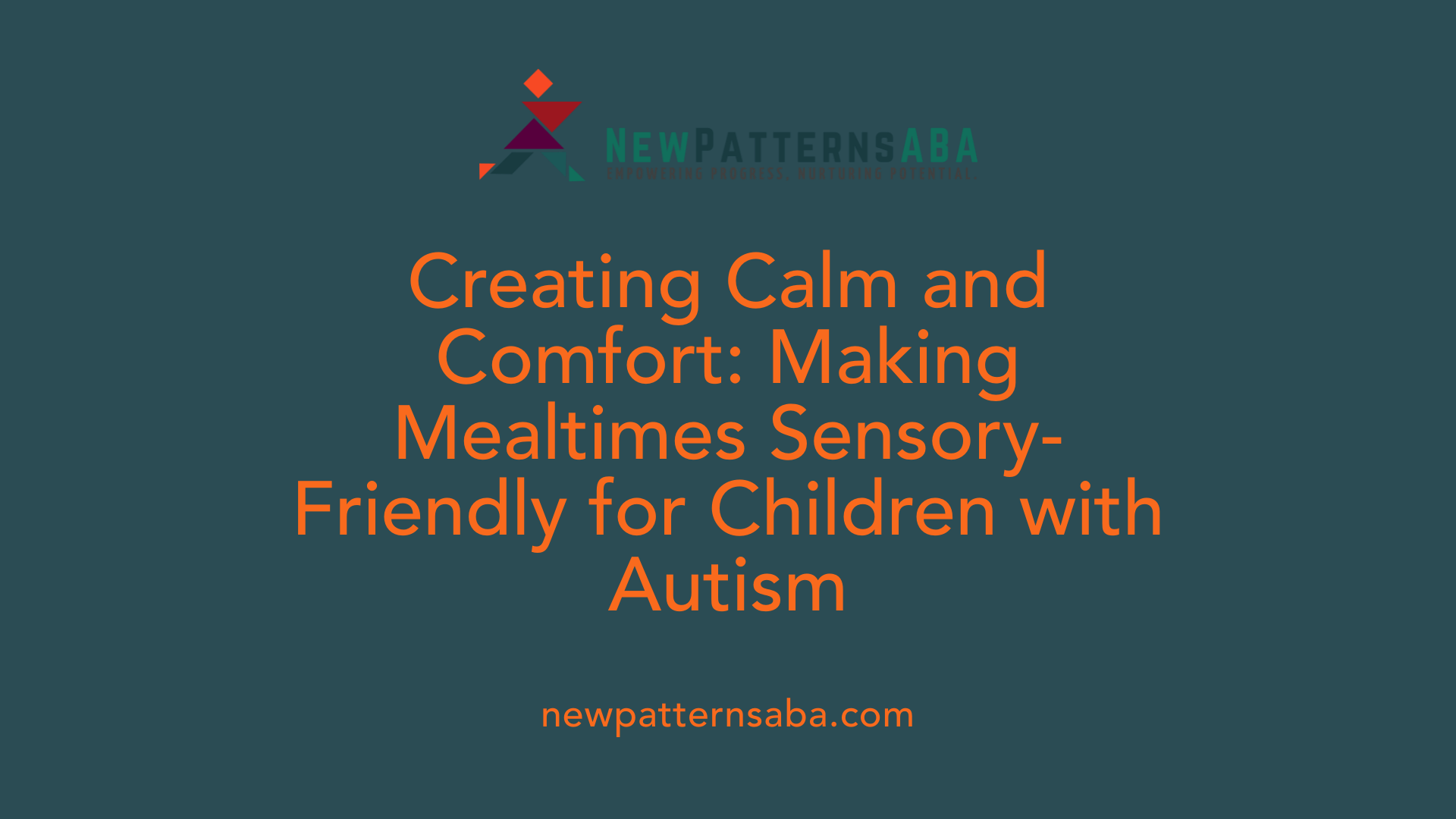Meeting the Dietary Needs of Students with Autism in Schools
Navigating school meal programs can be challenging for many children, but for students with autism, sensory sensitivities and dietary restrictions add layers of complexity. Federal laws mandate that public schools accommodate these needs without extra cost, ensuring every child receives appropriate nutrition in a supportive environment. This article explores the guidelines and best practices that help schools create autism-friendly meal programs, emphasizing legal requirements, sensory considerations, and collaborative strategies.
Legal Framework Supporting Meal Modifications for Children with Autism

What federal laws require schools to provide meal modifications for children with disabilities, including autism?
Federal laws require that public schools provide meal modifications at no cost to children with disabilities who have diet restrictions. This includes children with autism whose condition affects their eating habits or dietary needs. Schools are mandated to accommodate these needs to ensure all students receive proper nutrition without discrimination.
How does the Americans with Disabilities Act (ADA) impact meal accommodations for children with autism?
The ADA, expanded in 2008, defines disability broadly to include impairments that substantially limit major life activities such as eating. For children with autism, this means sensory sensitivities to food textures, smells, or tastes, as well as other related health issues, qualify them for meal modifications. This law supports access to meals that meet their specific needs.
Requirements for schools to provide accommodations without extra cost
Under federal regulations, schools must provide appropriate meal accommodations—such as allergen-free options or texture-modified foods—at no additional charge. These modifications must be based on a documented disability and dietary needs, usually confirmed through a healthcare professional’s statement.
Prohibition on denying meal modifications based on assumptions
Schools cannot deny meal modification requests simply because of stereotypes or assumptions about autism or disability. Denial is only permissible if accommodating would fundamentally alter the meal program. This ensures equitable treatment and respects the individualized needs of autistic children.
This legal framework safeguards the rights of children with autism to access suitable nutrition in schools, encouraging a supportive and inclusive environment for all students.
Understanding Sensory Challenges and Dietary Needs in Students with Autism

Why do children with autism often need special meal accommodations?
Children with autism frequently experience heightened sensitivities to a variety of sensory aspects of food, including textures, smells, tastes, temperature, and appearance. These sensitivities can make eating certain foods difficult or unpleasant, leading to selective eating behaviors that differ from typical picky eating.
Sensory sensitivities affecting eating
Many students with autism are sensitive to textures that others might find normal. For example, crunchy or mushy foods may be rejected. Strong smells or unusual tastes can also be overwhelming. These sensory issues often cause the child to avoid many common foods offered in school meals.
Gastrointestinal issues linked to autism
Beyond sensory challenges, gastrointestinal problems are common in children with autism. These issues may require special dietary adaptations to alleviate discomfort or manage symptoms, further complicating meal planning and preparation in schools.
Differences between sensory challenges and picky eating
Unlike typical picky eating, sensory challenges in autism involve genuine sensory processing differences. This means children may not simply dislike certain foods but may be unable to tolerate them due to how their brain perceives sensory input related to food.
Common food selectivity and preferences
Autistic children often prefer foods that are bland, have uniform textures, or are predictable in appearance and taste. They may also insist on the temperature or presentation of food being consistent. Understanding these preferences helps schools provide meal modifications that support the child's nutritional needs without causing distress.
Supporting these students requires patience, respect for their sensory experiences, and adjusting meal options accordingly to ensure both nutrition and comfort during school meals.
Procedures for Implementing Autism-Friendly Meal Accommodations in Schools

What documentation do schools require to provide meal modifications?
Schools typically request a medical statement from a healthcare professional to authorize meal accommodations. This document should clearly outline the child's specific disability and the related dietary restrictions, ensuring that the school understands the precise needs to accommodate. This process helps maintain compliance with federal laws and ensures that the student's nutritional requirements related to their autism are properly met.
What kinds of meal accommodations are mandated for children with autism?
Schools are legally required to provide meal modifications that cater to children with autism, particularly when sensory issues or food allergies prevent them from eating standard meals. These accommodations often include allergen-free and texture-appropriate foods that respect the child's dietary restrictions. Proper handling practices, such as safe storage and careful preparation, are essential to prevent allergen exposure and cross-contamination.
Federal regulations specifically prohibit charging extra for these modifications. Schools must offer alternative meals that meet nutritional needs without imposing additional costs. Moreover, they cannot base accommodation decisions on stereotypes or assumptions about autism, ensuring all requests are treated with fairness and respect.
How do schools prevent allergen exposure during meal accommodations?
To protect students with food sensitivities or allergies, schools follow strict procedures for food storage and preparation. Separate utensils, cooking areas, and designated serving equipment help reduce cross-contact risks. Staff receive training to recognize and mitigate potential allergen exposures, creating a safer environment for children with dietary restrictions due to autism.
What legal guidelines govern meal accommodations for students with disabilities?
Federal laws mandate that public schools provide necessary meal accommodations free of charge to children with disabilities, including autism. These regulations prevent denial of requests unless accommodations would fundamentally alter the school meal program. This ensures that all children, regardless of sensory or dietary challenges related to autism, can access meals that support their health and well-being.
By following these procedural steps and legal requirements, schools create an inclusive dining environment that respects and supports the unique needs of children with autism.
Creating a Sensory-Friendly Mealtime Environment

How can the school environment be adjusted to support children with sensory sensitivities during meals?
Children with autism often face heightened sensitivities to stimuli such as noise, light, and changes in their environment. These sensory challenges can make mealtime uncomfortable or overwhelming. Schools can help by creating a calm and predictable mealtime environment tailored to their needs.
Minimizing background noise in cafeterias or designated eating areas can significantly reduce distractions. Loud noises or unexpected sounds may trigger anxiety or sensory overload, making eating difficult. Similarly, bright lighting should be softened or adjusted because harsh lights may cause discomfort for children sensitive to visual stimuli.
Maintaining consistent meal and snack schedules adds predictability, which is comforting for children who thrive on routine. Knowing exactly when and where they will eat helps reduce uncertainty and stress associated with mealtime.
Overall, a sensory-friendly mealtime setting involves thoughtful arrangements such as quieter spaces, dimmed lighting, and routine timing. These adjustments help children with autism manage their sensory sensitivities, supporting more comfortable and successful eating experiences at school.
Nutritional Strategies and Support for Children with Autism in School Settings
How can schools support balanced nutrition for children with autism?
Schools play a vital role in ensuring children with autism receive balanced nutrition despite sensory or dietary challenges. Offering meals that cover all major food groups — fruits, vegetables, grains, proteins, and dairy — helps provide comprehensive nutrients essential for growth and development. Tailoring meal options to accommodate texture, taste, temperature, and appearance preferences can encourage more consistent intake.
What techniques help with gradual introduction of new foods?
Children with autism often benefit from slow, gentle exposure to new foods. One effective method involves pairing novel items with familiar, preferred foods to increase acceptance. Involving children in food-related activities (like grocery shopping or food preparation) helps build interest and reduces anxiety around unfamiliar tastes or textures. Consistent, calm mealtime environments support this gradual introduction strategy.
How is positive reinforcement used in promoting healthy eating habits?
Positive reinforcement encourages healthy eating behaviors without pressure or conflict. Praising children for trying new foods or eating balanced meals nurtures a positive association with mealtime. Offering preferred foods alongside new options and establishing consistent meal and snack times can further support routine and reinforce good nutrition habits.
These approaches, combined with understanding sensory sensitivities and legal meal accommodations, enable schools to provide respectful, effective nutritional support for children with autism. Collaboration with WIC staff and healthcare providers enhances tailored education and access to resources, fostering overall well-being.
Role of Families and Caregivers in Supporting School Meal Success

How can families support the effectiveness of nutrition accommodations at school?
Families play a crucial role in ensuring that nutrition accommodations for children with autism are effective and supportive. Open collaboration with school staff is essential. By clearly communicating the child's dietary restrictions, sensory sensitivities, and preferred foods, families help educators and cafeteria workers tailor meal options appropriately.
Educating school personnel about the child's unique preferences and challenges enhances understanding. This can include sharing information about textures, flavors, or meal presentation that the child finds acceptable or aversive, creating a more positive eating experience.
Consistency is another important factor. Families can reinforce positive mealtime behaviors and food acceptance strategies used at school by applying similar approaches at home. For example, using gentle encouragement, predictable meal routines, and gradually introducing new foods in both environments strengthens the child's adaptability.
Such ongoing communication and co-operation between families and schools foster a unified, supportive atmosphere. This reduces anxiety around meals for children with autism and encourages healthier eating habits.
By partnering in these ways, families not only help uphold federally mandated accommodations but also contribute to the child's nutritional success and wellbeing during school meals.
Integrating Applied Behavior Analysis (ABA) Insights into School Meal Programs
What is Applied Behavior Analysis (ABA) therapy and how can its principles support children with autism during meals?
ABA therapy applies behavior principles to encourage positive actions. Key strategies include positive reinforcement—rewarding desired behaviors—and task analysis, which breaks complex activities into manageable steps. During meals, these techniques help children with autism by gradually introducing new foods, improving acceptance, and decreasing eating-related challenges such as food refusal or tantrums.
Who typically provides ABA therapy and how can families collaborate with these professionals?
ABA therapy is provided by trained specialists like Board Certified Behavior Analysts (BCBAs) and therapists with expertise in autism. Families play a crucial role by attending training sessions, consistently reinforcing therapeutic strategies at home, and maintaining strong communication with ABA providers. This collaboration ensures a unified approach to support the child's eating behaviors both at school and home.
Techniques like positive reinforcement and gradual introduction
Positive reinforcement might involve praising a child or offering a small reward when they try a new food. Gradual food introduction pairs unfamiliar foods with preferred choices, decreasing resistance. These methods create a positive, patient, and step-by-step path to expanding dietary variety.
Importance of structured, supportive environments
Structured environments with predictable routines and minimal sensory distractions help children feel safe during meals. Schools can complement ABA insights by minimizing noise and bright lights, providing consistent meal times, and preparing texture-appropriate foods. Such environments reduce anxiety and support successful eating behaviors for autistic children.
Applying ABA principles in school meal programs creates a supportive framework that nurtures gradual food acceptance and healthy nutritional habits, ultimately improving eating experiences for children with autism.
Building Inclusive and Effective School Meal Programs for Students with Autism
Schools play a critical role in ensuring that children with autism receive nutritious meals suited to their unique needs. By adhering to federal laws, understanding sensory and dietary challenges, and collaborating closely with families and professionals, schools can create supportive environments where all students thrive. Integrating behavioral strategies such as those from ABA therapy further enhances children’s acceptance of diverse foods and fosters positive mealtime experiences. Ultimately, the commitment to individualized accommodations and patient, respectful care empowers students with autism to enjoy their meals safely, comfortably, and with dignity.
References
- Must Schools Provide Meal Modifications For Students On ...
- Supporting Sensory-Friendly Nutrition for Autistic Children
- Applied Behavior Analysis (ABA)
- Behavioral Health Treatment | Children with Autism Spectrum ...
- Applied Behavior Analysis (ABA)
- Treatment and Intervention for Autism Spectrum Disorder
- Applied Behavior Analysis (ABA)





